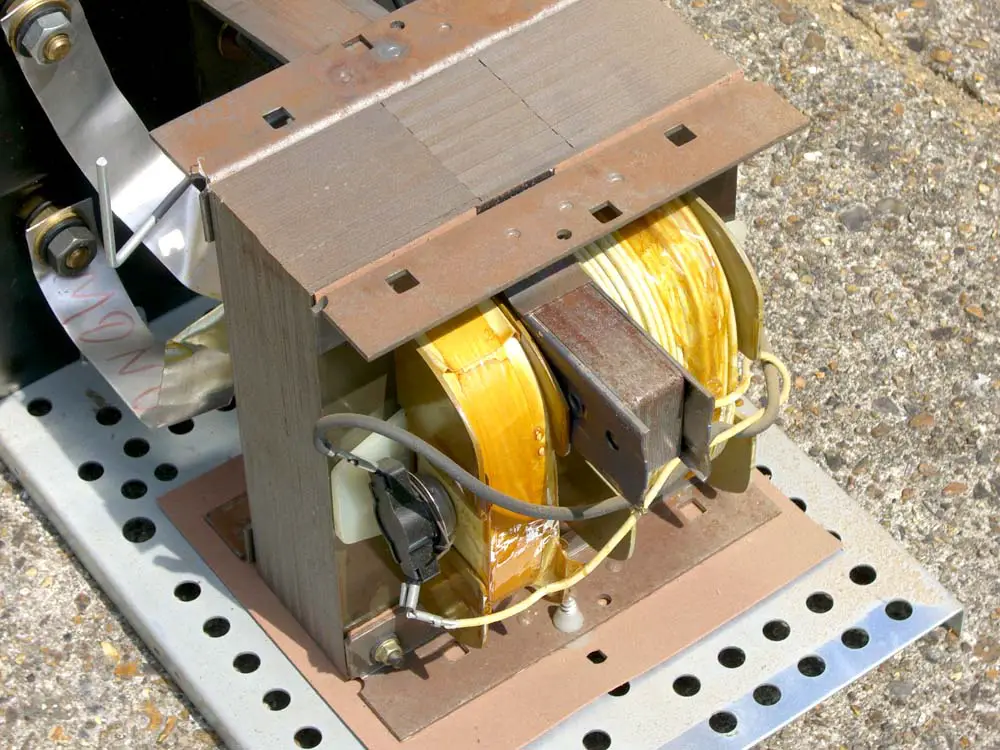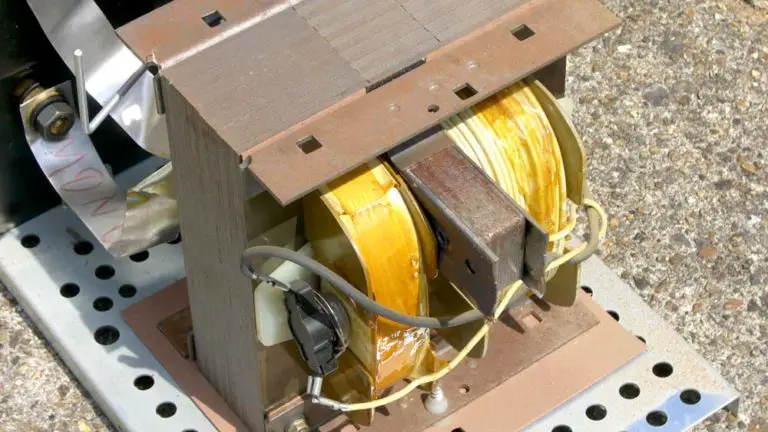When it comes to welding, an essential component that plays a vital role in the welding process is the welding transformer. However, not everyone knows how a welding transformer work and what it does. In this article, we’ll take a closer look at welding transformers and answer the burning question, ‘How does a welding transformer work?’
How Does a Welding Transformer Work?
A welding transformer works intriguingly. It is the hero behind the welding scene and helps transform electrical energy into the power required for welding. At its core, a welding transformer has two crucial components: the primary and secondary winding.
The primary winding is connected to the power source, while the secondary winding is linked to the welding circuit. Together, they help to convert and provide the power necessary for welding. To put it simply, a welding transformer modifies the voltage to what is required to create a welding arc.
When an alternating current (AC) flows through the primary winding, it creates a fluctuating magnetic field in the transformer’s core. This field is vital for the transformation process, and the magnetic field changes according to the AC.
This is where electromagnetic induction enters the picture. The changing magnetic field creates a voltage in the secondary winding, which only occurs because of the principles of electromagnetic induction. This principle states that a varying magnetic field can create an electric current in a nearby conductor.
In this occasion, the secondary winding is the conductor, which picks up on the induced voltage.
The welding transformer’s tap adjusts the transformed voltage output. Therefore, by tapping into various points along the winding, welders can set the voltage to their welding requirements. This feature allows most welders to modify the welding transformer to different materials, techniques, and applications.
What Are Taps on a Welding Transformer?
Welding transformers can offer the flexibility to tackle several projects because of taps. Taps are the secret ingredient that adds versatility and adaptability to your welding transformer.
They are predetermined connection points that are strategically placed along the secondary winding. These connection points successfully provide access to various voltage levels. They also allow welders to tweak the power output according to their needs.
Taps are essential for many reasons, one of which is that they give you control. When you select the right tap, you can optimize the voltage output to match the specific requirements of your welding project.
Whether working with thin materials or heavy-duty applications, you can customize the power supply to achieve the right welding conditions.
If you’re working on a delicate welding project requiring precision, you can select a lower voltage tap to get minimal heat output. This way, you can prevent burn-through and distortions.
On the other hand, if you’re working with thicker materials, you can select a higher voltage tap. This will give you the power necessary for a strong fusion and deep penetration.
What Are the Parts of Welding Transformers?
To answer the question, ‘How does a welding transformer work?’ It’s essential to know the components of a welding transformer. Below, we’ll cover the key parts of a welding transformer and how it contributes to its operations.
- Core: This is the central part of a welding transformer. It is made up of high-permeability
- materials like steel or laminated iron. Its main function is to provide a low-reluctance path for the magnetic flux created by the primary winding.
- Primary Winding: This is the coil of wire connected to the power source. Electric current passing through the primary winding creates a magnetic field around the core.
- Secondary Winding: This is another wire coil around the core but has a different number of turns from the primary winding. It is responsible for sending the transformed voltage to the welding circuit.
- Taps: As mentioned earlier, these are connection points along the secondary winder that allows welders to select their preferred voltage levels.
- Insulation: This is crucial in welding transformers to prevent electrical leakage. It also ensures the safety of welders by applying insulating materials to the windings. These materials isolate the windings from each other and the core.
- Cooling System: This cooling system generates heat during operation because of the flow of electric current through the windings. The welding transformer uses cooling systems to prevent overheating and ensure optimum performance.
- Voltage Regulator: This is optional in most welding transformers. However, a regulator allows welders to tweak the voltage output even further. This way, there’s more control over the welding process.

What Are the Types of Welding Transformers?
Welding transformers come in different types, and they’re all designed to cater to various welding needs. Below are the common types and their features.
- High Reactance Type: This type of welding transformer is characterized by a high reactance in the secondary winding. This means the transformer has a high impedance that limits the current flow in the secondary circuit. The high reactance helps to stabilize the welding arc by preventing current surges.
- External Reactor Type: This type includes an external reactor connected in series with the primary winding. The external reactor it comes with helps to increase the reactance of the transformer and reduce the short circuit current.
- Integral Reactor Type: This type of welding transformer includes the reactor within the transformer. This way, there’s no need for an external reactor. The integral reactor effectively regulates the current flow and helps welders gain better control over the welding process.
- Saturable Reactor Type: This welding transformer type features a saturable magnetic circuit reactor. The reactor helps to provide control over the magnetic field strength. In turn, it regulates the welding current. When you adjust the saturation level, you can modify the current output and enjoy excellent control over the welding process.
What Is the Difference Between a Welding Transformer and a Normal Transformer?
Many features set a welding transformer apart from a normal transformer. These differences help us understand their unique functions and features; let’s take a look.
- Voltage Regulation: A normal transformer provides precise voltage regulation, but a welding transformer allows for vast voltage variations. These various voltage options help to accommodate the changing arc length and welding conditions. On the other hand, a normal transformer will provide a stable output voltage regardless of the load variations.
- Current Capacity: While normal transformers handle lower currents, welding transformers are designed to withstand high currents associated with welding processes.
- Duty Cycle: This is the total percentage of time a welding transformer can continue to operate without overheating. Welding transformers are designed to handle high-duty cycles, but normal transformers cannot. There are used where intermittent power demands are common, while welding transformers are used where prolonged welding operations are common.
- Construction and Cooling: Welding transformers usually feature heavy-duty construction because they need to withstand the stress associated with welding environments. On the other hand, normal transformers only feature the standard insulation because they’re not required for high levels of ruggedness.
Conclusion
Understanding how a welding transformer works is essential when you want to use this welding equipment. They help to generate more heat and energy for welding processes through their various parts. Now that you know the various types and parts of a welding transformer, you can make more informed decisions when choosing the right transformer or adjusting your welding voltage for your desired results.


Add comment